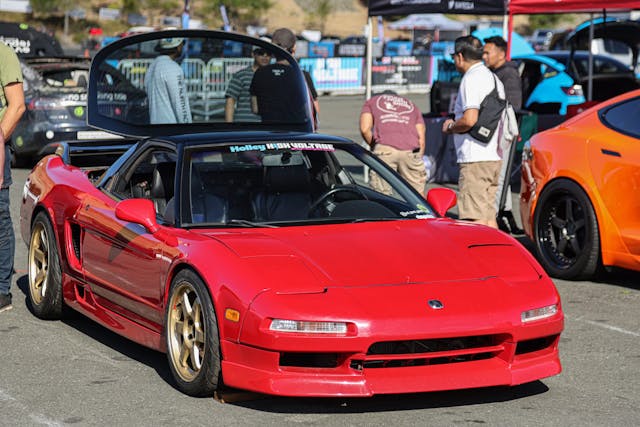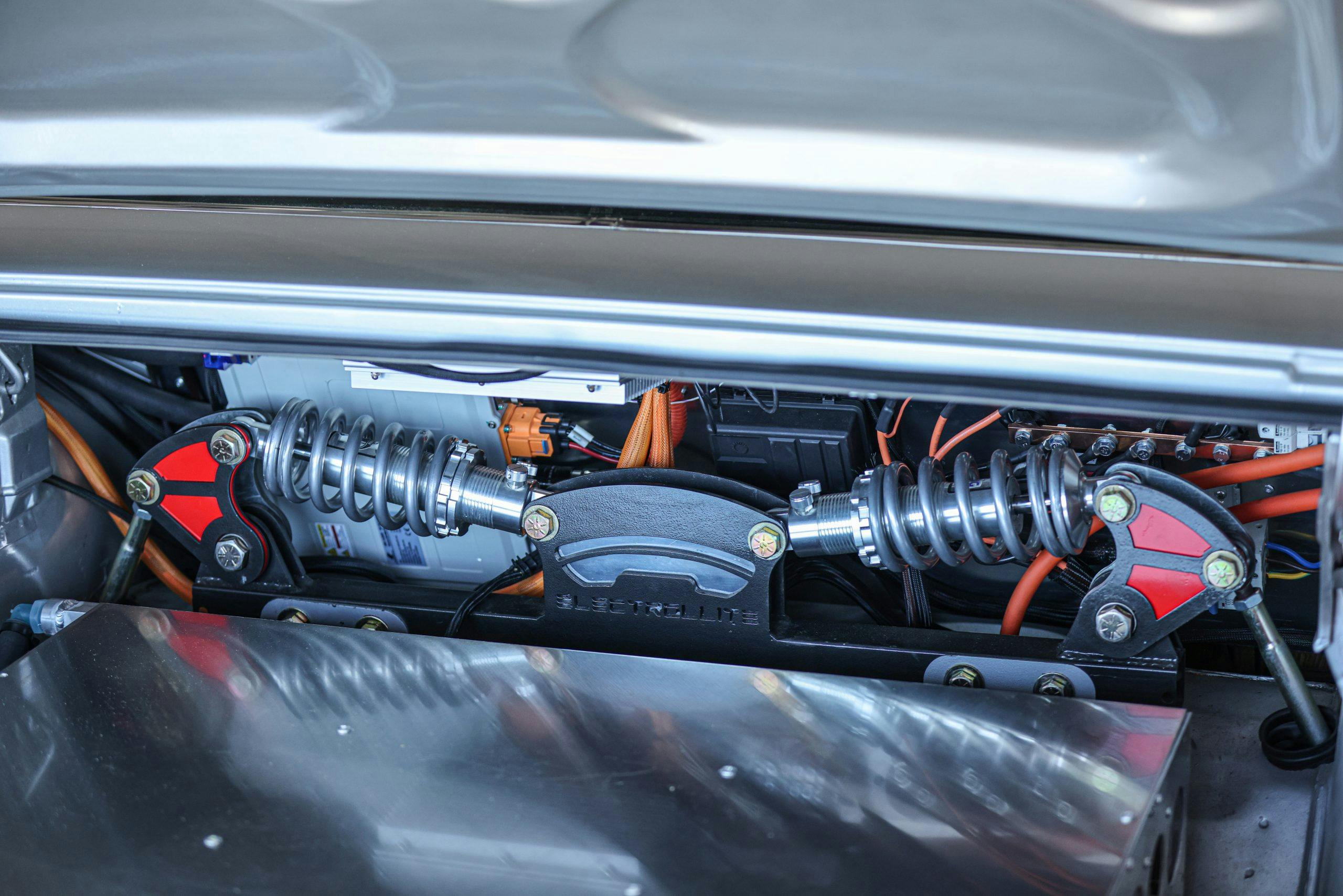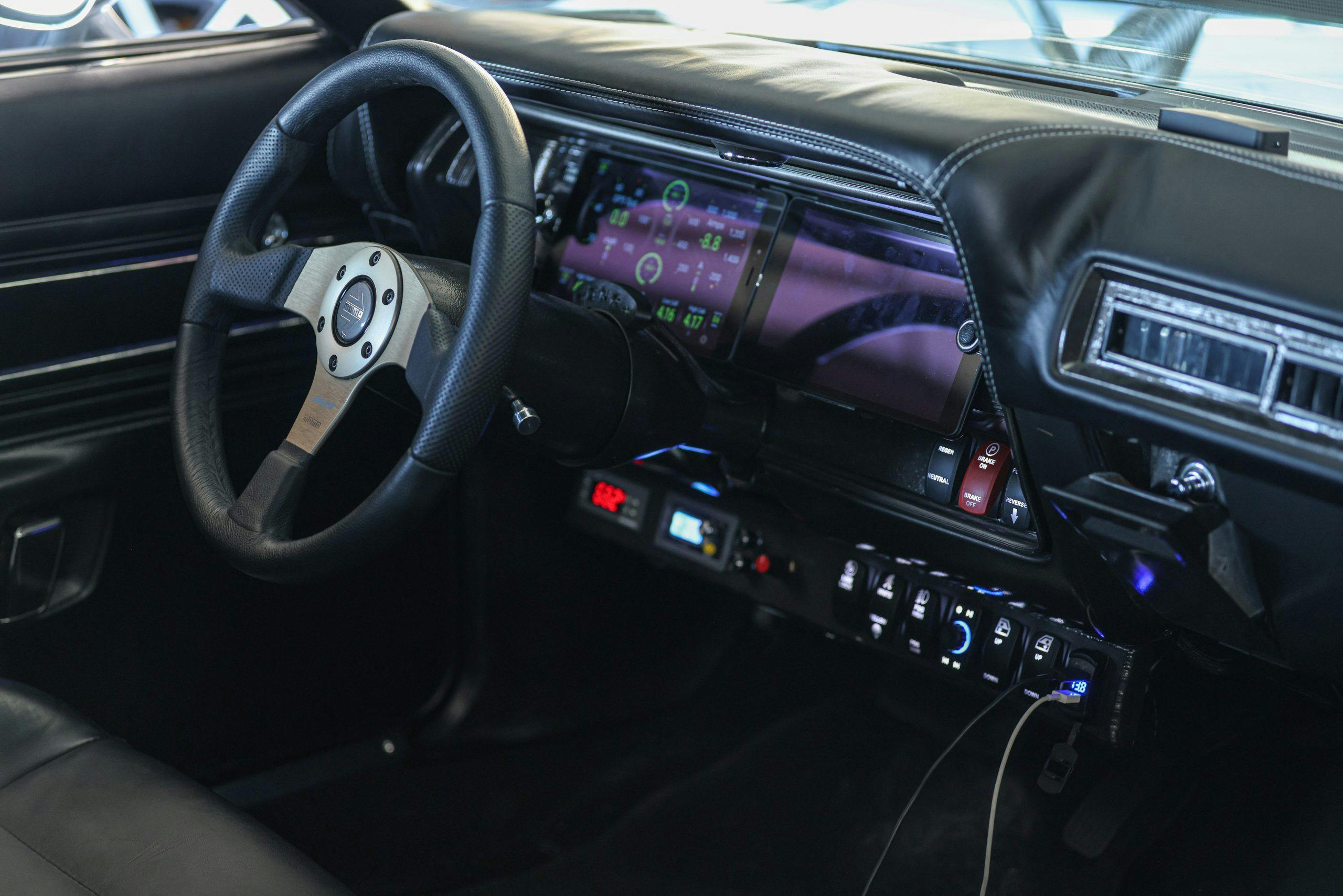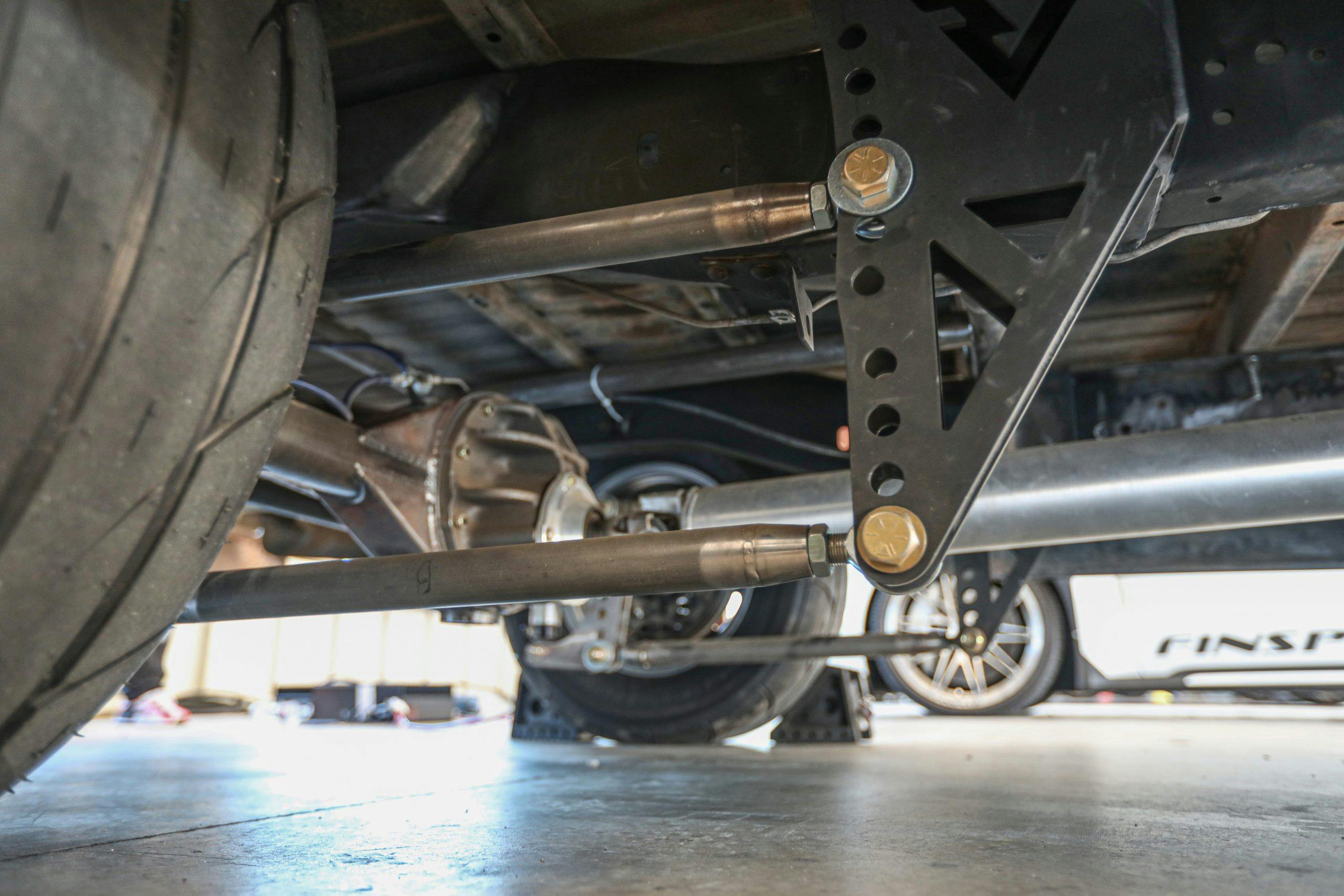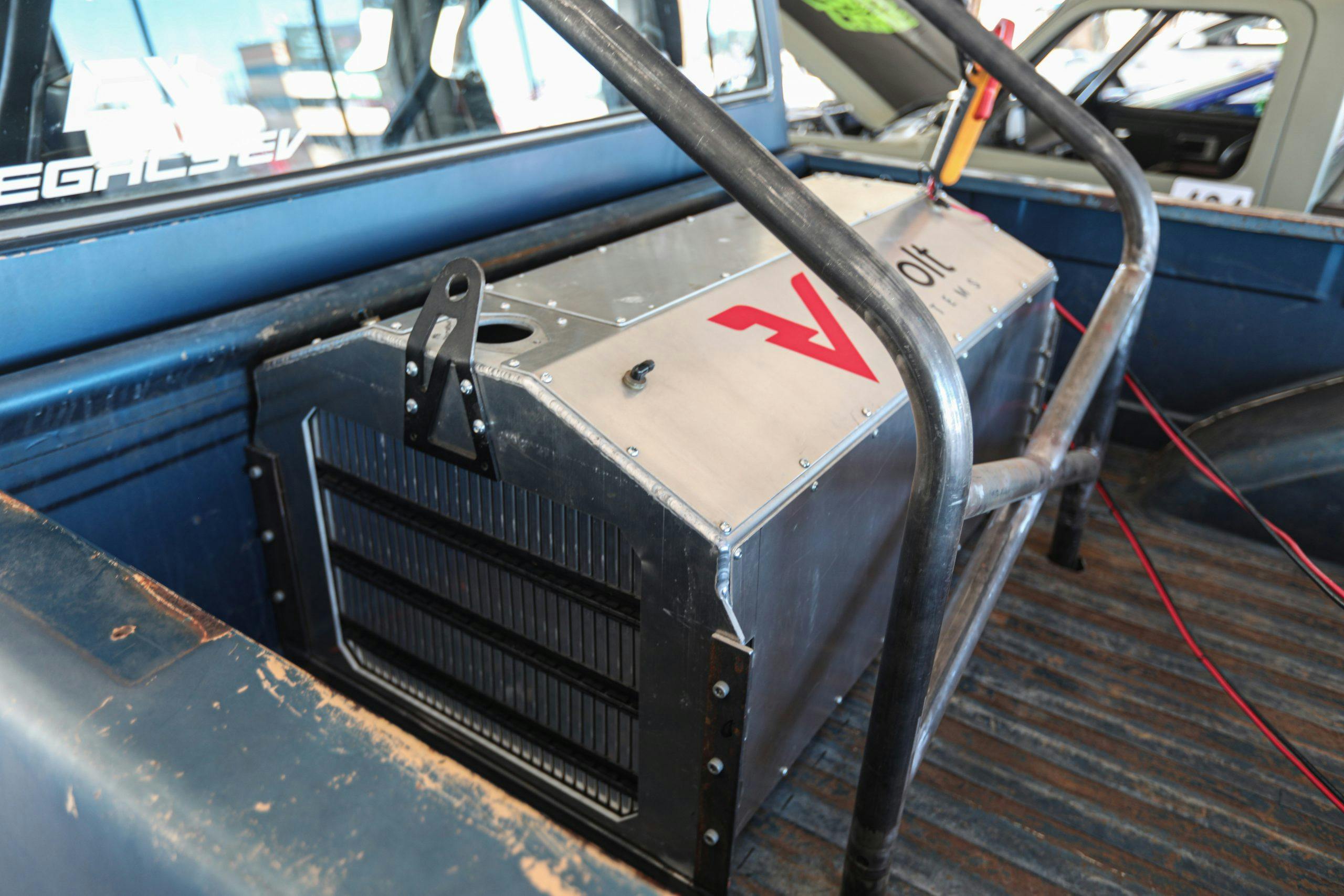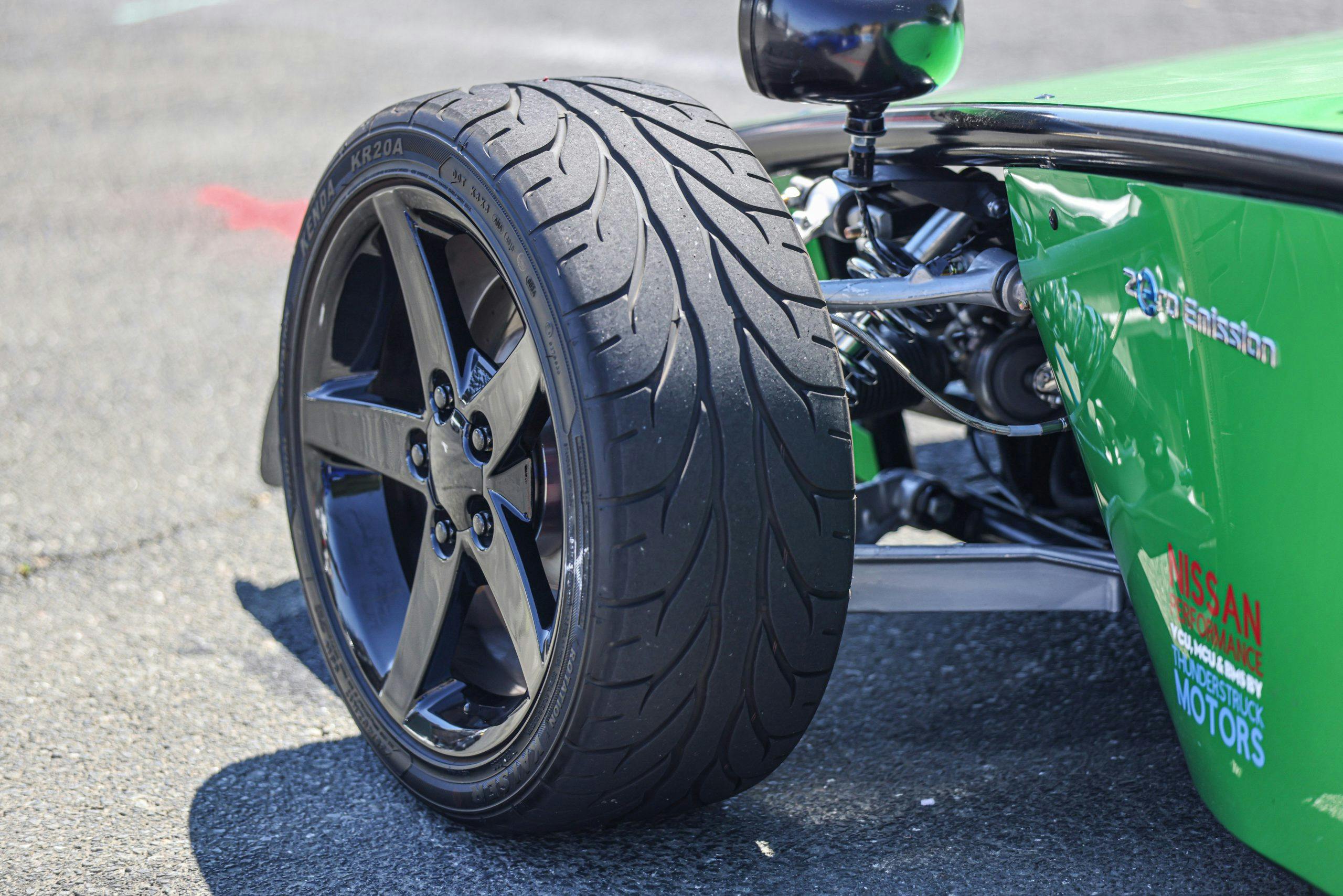5 of our favorite EV builds from Holley High Voltage
We visited Sonoma, California, on July 9 and 10 for the second installment of Holley High Voltage, a car event all about electric vehicles. The fledgling event, held at Sonoma Raceway, seemed to have more participants than spectators, as everyone in attendance was an EV enthusiast that wanted to either show off their custom ride or put it through its paces on the autocross track, dragstrip, or Sonoma Raceway’s hilly road course.
You may be wondering why a company with a name that’s synonymous with carburetors would be interested in hosting an event for electric vehicles. Rest assured, Holley is a lot more than Dominators and double-pumpers these days. Holley has been bringing a wide variety of brands into the fold. That includes Rekudo, which makes suspension upgrades for Tesla models, and AEM, a company that builds a number of electronic components that help EV hot-rodders swap batteries and powertrains into all sorts of cars. We drove AEM’s Tesla-swapped Mustang earlier this year and it was a great preview of what to expect from enthusiasts. Plenty showed up in brand-new Rivians, Teslas, Mustang Mach-Es, and Chevy Bolts, but we were particularly interested in the swaps. Here are some of our favorites.
1994 Acura NSX

There are plenty of cars that came with mediocre powertrains in otherwise great-looking packages that make perfect candidates for an EV conversion. A DMC DeLorean is a great example. The Acura NSX is not. Praised for its high-revving, naturally aspirated V-6 powerplant that was perfectly balanced with its sharp, Zanardi-honed chassis, the NSX smashed supercar stereotypes for being dead reliable. Geoff Budd of Redwood City, California, managed to find an NSX that was driven hard and had already been the recipient of an engine swap. With 225,000 miles on the odometer, a few dings on the body, and a Honda K-Series four-cylinder installed, the car was having trouble selling. Budd made the seller an offer: take some money off the price, but also keep the four-cylinder. It was a deal. The conversion to EV is still under way, as there are plans for more batteries up front. For now, the Tesla Model S drivetrain is powered by batteries located between the front seats and the engine firewall, right where the Acura’s fuel tank used to be.
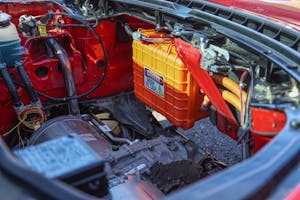
K1 Attack
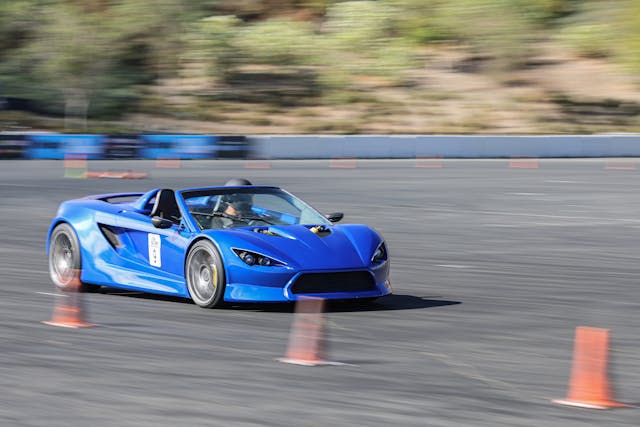
If you followed the instructions of building a K1 attack you’d look for a Honda Accord donor and put its transaxle in the back, creating a reliable, economical mid-engine car. Jeremy Snow, from Salt Lake City, Utah, tossed the instruction manual away and instead placed a Tesla Model S drive unit at the rear wheels. It uses LG Chem batteries from a Chrysler Pacifica hybrid, one of the most power-dense options on the market at the time he was sourcing parts. While he did place some of the batteries up front to balance the weight, it still has 52.5 percent of its 2580-pound curb weight on the rear tires. Its 125 miles of range is good for quite a lot of autocross runs, and regen braking can help maintain the charge as well.
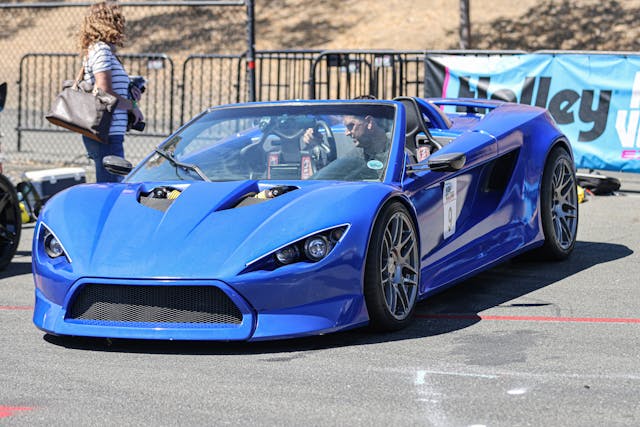
1972 Plymouth Satellite Sebring
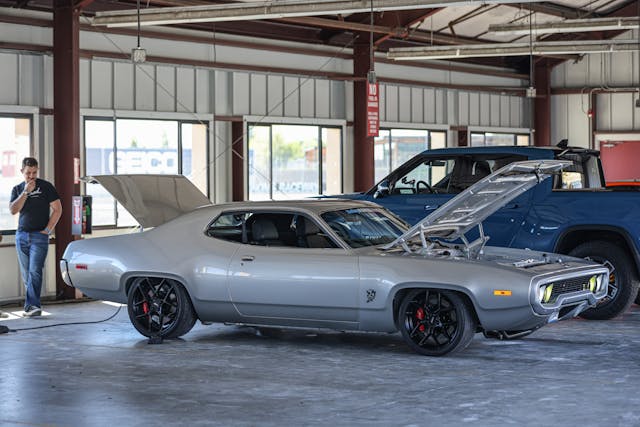
Kevin Erickson from Denver, Colorado, brought his 1972 Satellite Sebring to Holley High Voltage for the second time. Nicknamed “Electrollite”, the fuselage-body Mopar uses a Models S large sport drive unit good for more than 600 hp and it’s fed by batteries from a Model S P100, with six modules in the rear and 10 up front under the hood. “From brakes to brakes it’s a Tesla subframe, all aluminum, all self-contained.” Erickson told us. The build took about a year and a half, with Erickson careful not to cut the car up in the process. The car weighs 4358 pounds, or about as much as a modern Challenger 392, and has served as his daily driver since it was completed about a year ago. So far, Electrollite has given Erickson 5000 EV miles with a range of around 200 miles without deeply discharging the batteries.
1980 GMC Sierra Grande
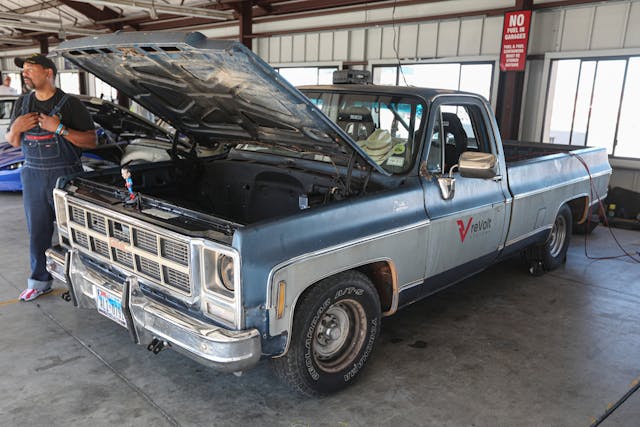
This truck originally came that came with a low-power, high-torque big-block. It was purchased in Texas and the V-8 powertrain was sold to recoup most of the investment. Then Snow and the crew at Revolt Systems in Oceanside, California, swapped in one of its CR43B crate motors. The ReVolt team used a Quick Performance rear axle and built a custom four-link with DOM tubing to get the 600 horsepower to the ground. The battery pack that was installed at time of the event is a 20kWh unit intended for dragstrip fun and around-town parts hauling, it’s only good for 60 or so miles. “I’ll drive it a lot, but it’s set up for the quarter mile,” Snow said. (Just think of it as a Pro Street build. There’s also a P100 battery pack can be swapped in if longer range is needed.) The truck’s cage extends to the bed, where it surrounds the battery pack. Removing a few bolts form each side allow it to be lifted out and replaced. “It weighs about the same as a motor,” Snow explained.
Apex Cricket EV

Dave Green, from Folsom, California, previously engineered a tube chassis that uses C5 Corvette suspension and powertrain to build a featherweight sports car he called the Apex Spyder. This new creation, using a similar chassis and C5 suspension, is dubbed the Apex Cricket EV. For the past several months, the car has used an 80kW Nissan Leaf drive unit and Chrysler Pacifica hybrid batteries. The crew at Thunderstruck Motorsports has helped Green with the vehicle control unit and recently sourced a 160kW Leaf drive unit that is externally identical to the current unit so the 1740-pound missile will soon have double the power to tackle the autocross. For now, it has enough battery to run autocross all weekend without charging, that may change when the power doubles.
This event, and others like it, are going to help EV hot-rodders share the knowledge and experience of building electric cars, which often require a completely different set of skills. Even these early builds are quite promising; we watched several of them on the track having a blast for just a few minutes worth of charge time. As more battery packs and drive units become available and affordable, we’re only going to see more custom builds like these in the future.
